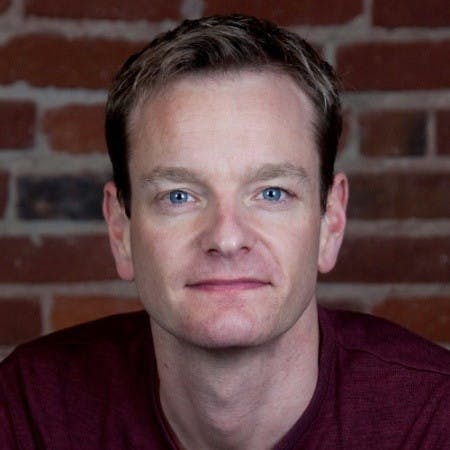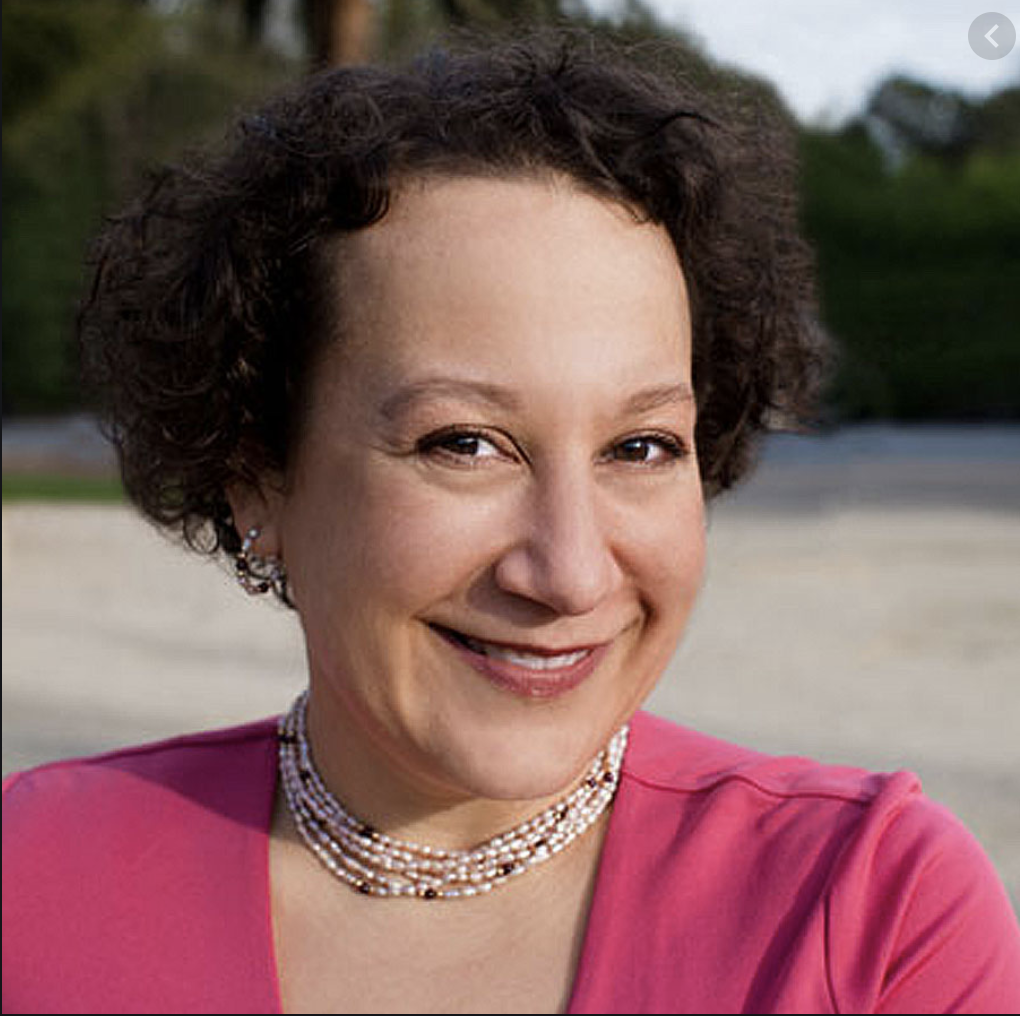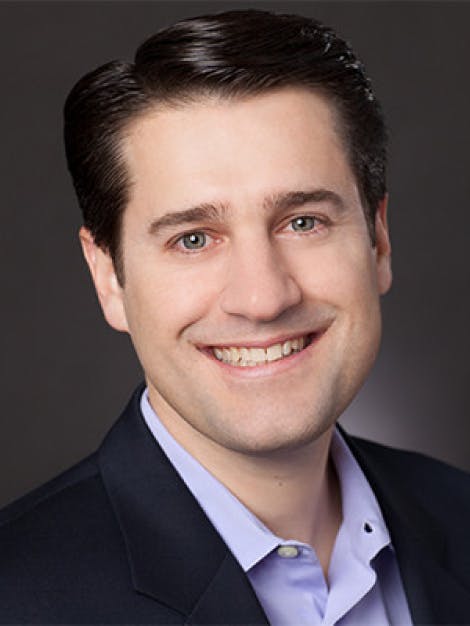Season 6 - Episode 6
Beyond OKRs: Goals, Roles and Norms
Christina Wodtke is a professor, speaker, and author of Radical Focus and The Team That Managed Itself. In this episode, she walks us through her product career, the power of communication, how to empower teams through continuous feedback, lightweight and effective OKRs.

“Why don’t you tell me more about how you broke into product.”
I went to art school and I moved to San Francisco and painted and waited tables for years. And then the internet came along and I just fell in love so hard. I was like, oh my gosh, this is the most amazing, creative, terrific thing I’ve ever seen. So I taught myself some HTML, taught myself JavaScript when it showed up CSS when it showed up, I lived with most of those early technologies arriving. I started asking myself a question, why are so many products kind of crappy? And so I was like, well, here I am, you know, a little first I was an engineer. Then I was a designer. Then I was an information architect and I thought, well, maybe it’s the product manager. So I got into that and I was like, well, maybe it’s the management. So I got into that. And eventually, as a general manager, I was high enough to see everything. I could see the CEOs, I could see the board and I was like, it’s not the role you have. It’s not the power you have. It’s how everything connects. And that’s when I started becoming much more interested in how do we communicate effectively?
There’s an old saying that product managers get things done with influence, not authority. And I think that’s a big, big piece of the puzzle. So how do we communicate effectively? And you can’t trick people cause you’re gonna work with them for two or three years. So you actually have to create meaningful relationships and really get everybody pointed in the same direction. And that led me to OKRs to the Empowered Team Model that I had a Team That Managed Itself. Even The Drawing Book is about communication and being great at communication.
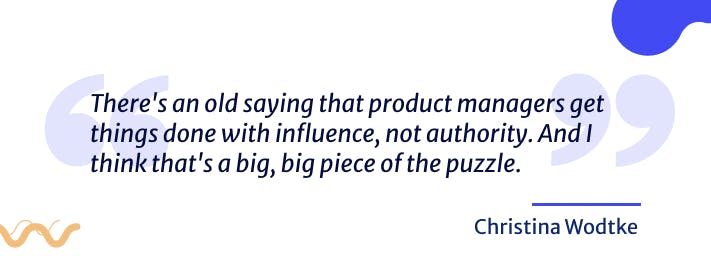
“Coming from engineering as well, I also realized it was less about the technology and more about the interactions with humans. What frameworks did you start using that you think could work for different teams? ”
I was one of those kids in seventh grade who tried to read every single book in the library. I love books, I love reading. And so I read really, really fast. And so I basically read everything I could find on these questions about product management, David Bradford’s wonderful book Influence Without Authority, lately Amy Edmondson’s wonderful fearless organization. I always think of my work as a mystery. And so I’m always looking for clues. What’s a clue to figure out how this works? And what’s interesting to me anyway? I would gather this information, whether it be from a pop book or from a scientific paper, and try to figure out how does it all hang together?
And it wasn’t until I started trying to figure out how to make good diagrams? How do I make good models? I was able to start developing frameworks. It was almost like I needed an entirely different language to even understand for myself, much less be able to communicate with others.
I spent a year, while my editor was recovering from cancer, just working on learning how to draw and then working on writing a book about communicating through very simple, ugly drawings. I’m like, I’m not gonna make you draw beautiful things, but I am going to help you communicate. and then when I came back to The Team That Manages Itself, I had this kind of superpower, I guess, of being able to understand how all the elements of a good model hook together and how to draw it and how to share it with other people. I’ve considered this part of my learning process. You ask questions, you figure out who has the answers you learn from them, and then you integrate it into your own style.
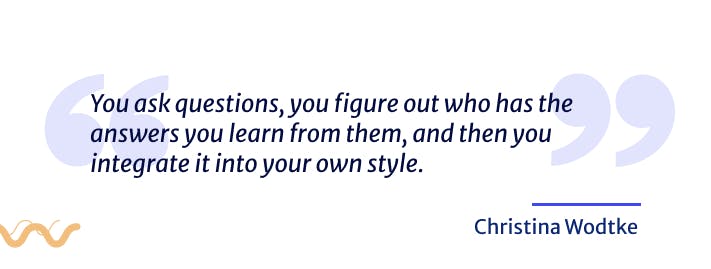
“Tell us about your first book”
I had gone to graduate school for writing and I failed. I wrote this book that was so boring that even I was bored by it and I couldn’t finish writing it. 10 years forward. I think, hey this, OKR thing is pretty cool. I would love other people to know about it because I think it could help people. But who wants to read a book about an acronym? Let’s be honest, they were popular then. And I was like, okay, I’ve got to find some ways. So people will actually be interested in learning about this stuff. So, I studied, and read tons of books, figured out how to write a decent story, and then like a good lean person, I made a little prototype. I wrote a 75-page version of it. It was called The Executioner’s Tale. It was ugly. It had a cover designed by one of my students. I printed it at a local print shop and I sold a hundred copies, signed a number. There are 100 people out there who have a copy of it and got their feedback and learn.
It was fun because as I got towards the end of the a hundred, I think it was like five bucks if you bought the first 10 and then the next ones were 10 bucks. And I started to find the price point for it. But the feedback blew my mind because I had this picture in my head that I had to write like a 200 page book or 150 page book. And everybody kept saying, I love that. It’s so short. I love that I can read this in a couple hours on a plane ride. So I ended up, taking all that feedback and putting it into the first Radical Focus.
The only thing I did that had no testing that was kind of crazy were the illustrations in the front. I was like, people seem to like these drawings, I think I’ll throw them in. and then later I thought, wait a second, are people gonna think it’s a kid’s book, but people have really enjoyed the book. So I’m happy it worked out.
“Can you tell us more about Radical Focus and what are some of the highlights from the book?”
Well, as I mentioned, it starts with a fictional case study. So we use fiction to understand OKRs in context of real life practice. So I tell the story of a little startup that is struggling to get their team on board with a pivot. And I think that’s one place that objectives and key results can be really useful is when you’re trying to get people to think in a new way, but they keep falling back into the old way and keep it up. We’ll focus on going, no, this is our business model. Now don’t forget. We’re actually selling to these people now. and then the second half was, sort of non-fiction advice very much like Patrick Lencioni’s books, which are awesome. I recommend Death by Meeting. I recommend Five Dysfunctions of a Team.
Number one, no cascading. You can only do cascading if you have like 12 or 15 people in your company, just don’t cascade your OKRs. it goes to an alignment model whereas the company sets some at the top, everybody decides all the groups, product groups decide what their own cares are going to be. Then you do a quick peer review with a couple of other people just to, you know, figure out if you’re crazy or not. And then you have to trust people. This is a lot more effective because empowering people is how you keep your A-players, you hire the best people you can find, then you trust them to get things done.
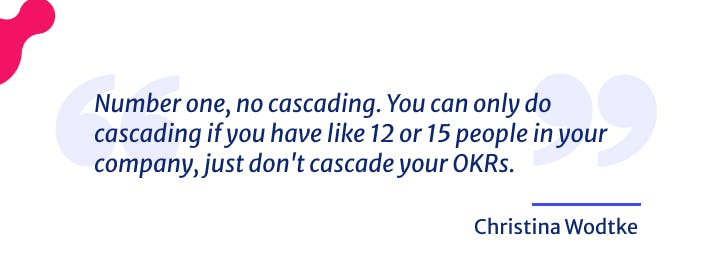
It’s a very big change, and it’s a very, very important change. So once you’ve got the company, OKR set, everybody just figures out their own and you just trust it’s going to work. And then if something goes sideways, so you dive in and coach, and that’s a big change, Marty Cagan and I have been in conversation for five years, because he wrote the forward to the first book and we’ve been going back and forth about what makes good teams work and what makes bad teams work. And we both come to the same conclusion, which is to hire good people and trust them. It’s pretty simple. And then the OKR is, are more there to make sure that people are aligned. They know what the most important things are.
Then there are other things like talking about pipeline. Sadly, as I’ve been consulting here and there between my day job work, I’ve seen people try to use OKRs for everything, and they’re not. They’re not to do everything. They really have one specific job. And they’re not for people management. They’re not for controlling every single effort you’re doing. They’re about making sure that the critical strategic work that you have to get done actually gets done. This is a very radical, a different point of view than certainly what the software makers want you to think. And, a bit different than I think the other books that are out there, there’s like two now, I think after mine was written.
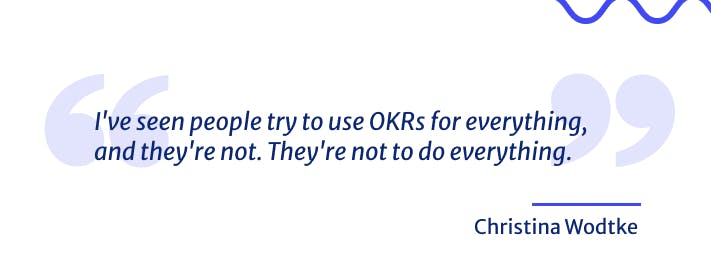
“This is a more tactical question, but how can a product team create some sort of goal or objectives for them to know that they are aligned?”
I think the important thing is to step back first and figure out what’s the big picture of everything, right? So I talk about the fact that I prefer, and I recommend using pipelines instead of roadmaps. So roadmap for semantic purposes. I’ll just clarify what I say. Roadmaps are lists of things you plan to do. A pipeline is a list of things you could do with evaluation, about how hard it’s going to be, what kind of impact you think you’re going to be and how much confidence you have in that it’s actually going to work. Once you set these goals that are objective, which is inspiring, and then the key results, which are, outcomes, they are numbers out there in the world that will change if you’re successful. So they can’t be tasks. They can’t be oh, my OKR is to find a nice low calorie snack. I think I’ll just go down to Trader Joe’s and see what they got. No, that’s a task. I think we’re going to launch 20 blogs this year. Well, it’s got a number, but guess what? There’s no outcome.
What you want to do is look for things that are like cold leads. Cold leads are awesome because people are hearing about you or revenue. Revenues, usually a decent sign that something’s working. It could be time on site. There’s just so many good numbers that you can use. You can even get out the quality numbers, with a little bit of effort.
I think what happens is, let’s say you’re, I’m a product lead, leading a team, or even, managing a larger product group, like a business unit lead, you’re going to have all the things you have to do, right? Like keeping the lights on, that’s all stuff that has to happen. And then you have all the things you’re worried about when you’re trying to do amazing things. You want to make sure you’re not writing bad code, that’s going to crash. You don’t want your people to get burned out because it’s very expensive to lose people and have to rehire them and have to train them and finding great people is really hard. Great. People are always hard to find even in the worst economy because they’re great. Maybe you want to protect team health.
Then the question is, what’s the thing we really should be doing this quarter that we’ll forget to do because of firefighting, right? Or craziness. And that way you take something that’s from the old Eisenhower matrix, you know, where it’s important, not important, urgent and not urgent. You take all those important and not urgent things. And you say, we’re going to set an OKR around it. And this quarter we’re actually going to do it. We’re not going to wait for tomorrow anymore. and so that can be lots of things.
I love talking to product managers because they really get, this is we always have these questions, like how do we expand our market? Do we go bring our current product to another market? Do we create a new feature that will appeal to new people within our current market? There are all these strategic questions. You use an OKR to basically communicate those strategic decisions or measure your hypothesis that you’re working on so that you have a higher certainty of knowing whether or not you’re going in a good direction. And so the OKR is because they’re inspirational and because they have numbers attached to it they are really good at guiding those efforts. But you have to remember that you still have to do all the other stuff too.
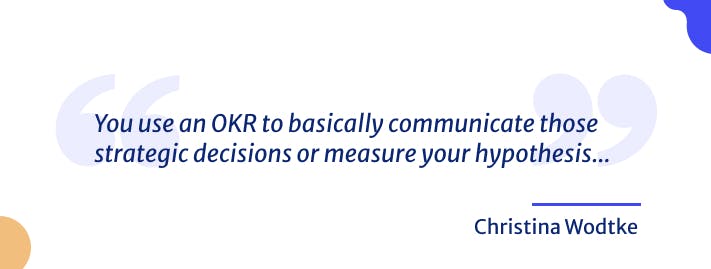
“There is this misconception in product, which is about shipping, shipping, shipping features. That is obviously important, but there are many other things that go with it. Technical debt, hiring key play players, maintaining good team morale. So do you recommend some of those objectives as part of the OKR?”
No. Only one OKR and it’s only for the strategy. You have to trust everything else has to get done. So what I recommend to people is doing an inventory of all the stuff you have to do, right? Like how often do we step back for a minute? And I don’t want to say work on a weekend, but like maybe take a Thursday, Friday, block it off, figure out everything that’s going on, make yourself a nice big picture of it. Walls are really important for thinking. I teach at Stanford, I spend a lot of time looking at psychology and learning science, and it’s really useful to be able to have everything right in front of you. That’s the reason that we started creating Kanban boards. You need to see everything that’s going down, right?
Once you see everything that’s going on, then you can ask yourself the question of, what do we really have to do to give us the kind of resilience that we need as a company. What do we have to do? That’s allowing us to grow in a sensible way, and then you make the OKR around that. We spend a lot of time trying to manage things that we’re going to do anyway, like in my personal life, I’m going to pay my bills. And if I don’t pay my bills, my lights are going off and then I’ll pay my bills. Like it’s gonna happen. So why would I put an OKR around, remember to pay the utility bills? What I want to do is put in an OKR that says, create a first draft of the next book you want to write on the creative founder, perhaps, because if I don’t make that OKR, I’m going to be busy answering student calls and going on podcasts and everything else, you know?
So how do I make sure that these things that I really know are important are getting done? And I think there’s this urge to find the one ring to rule them all. It’s like, oh, okay, ours it’ll control everything. And no, it, no, that’s not right. It’s a piece of the puzzle. It’s not the entire puzzle.
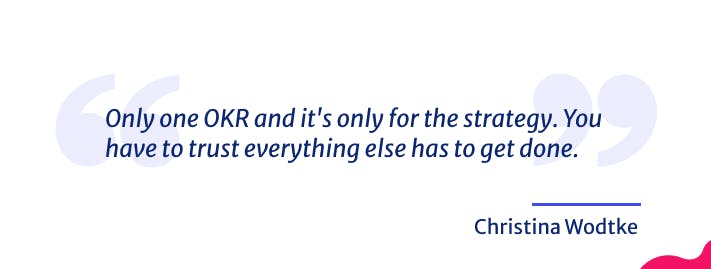
“Let’s talk about the entire puzzle now. How do you recommend for people to really keep focus and identify what are the top priorities and stick to them? ”
One of the single most important things is cadence. So a lot of people think it’s all about wordsmithing, the perfect OKR. If I can just write the perfect OKR, everything will happen. Right. But that leads to set and forget. It’s actually okay to have a poorly written OKR, preferably not with tasks and the key results, but maybe it’s not perfect.
Every Monday you have to ask yourself, what am I doing this week to get closer to the results I’m trying to make happen? What is an experiment I can run? What’s a task I could do? What’s a project I can start. , and then every Friday with a company, you celebrate your progress towards the OKR and hopefully write the super lightweight status email that I recommended in the book. Where all you do is say, what confidence do you have? We’re going to hit the OKRs and what are the three most important things I’m doing next week against them? What are the three things that happened last week that I tried and what happened?
This is where you get learning. And it’s so powerful to say, I tried this last week, but nothing happened and you write it down and you learn it and you share it. And the company gets smarter and smarter and smarter and more effective. So what’s critical to keep your priorities is I kind of think of it OKRs is a lucky rock. I know it’s a weird metaphor, but I like it if I wrote my OKRs on a rock I found in a river ocean and I put them into my pocket and I always have it in my pocket and I pull it out and touch it regularly. I’m going to remember, that’s the most important thing. But instead of a rock, we have the Monday commitments, we have the status email, we have the Friday celebrations.
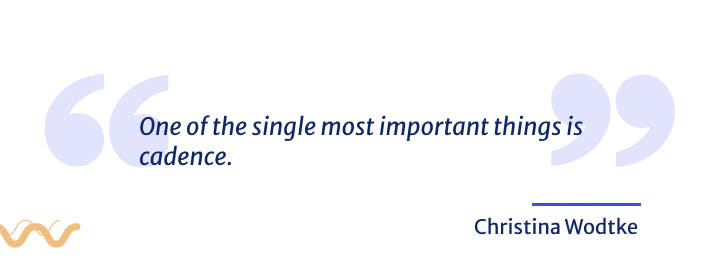
“And when you say that you are going to remember what’s in that rock, I guess it’s not just you, but the idea is that the entire team needs you at the same question without you in the room, that person should be able to get the same answer.”
Everybody gets a rock.
“What would be some lightweight ways for people to maybe see some examples of other successful teams or companies implementing OKR?”
Oh my gosh. Thank you so much for talking about lightweight. Almost every conversation I have with companies they’ve made it too complicated. It really doesn’t have to be that hard. So, early on Gather Content was a great, company, Angus Edwards wrote quite a bit in public. The problem is always going to be finding people, writing about it in public, because there’s always an urge to tell everybody how amazing and awesome you are. So go through those, but maybe with a grain of salt. If you Google around, you can find lots and lots of examples.
I will say one great thing about the second edition of the book is that in the first one I wrote like only a few examples in the first book, the second one’s got like 40 or 50 example OKR, and maybe 10, 15 negative examples. I just would love to say if you’re thinking about OKRs, pick one per high performing team to start with. Now a lot of people are like, OKRs will fix things. So let’s start with a bad team, but don’t do that because bad teams are bad at it’s just, it’s going to confuse matters. So you start with a high performing team, let them work with it for 30 days, let them tell you I had to change these things to make it work with our cycle, like we do sprint planning on this day or whatever. And then at the end of those three months, if it’s been successful, then you can start rolling it out to a few more pilot people.
But again, lightweight. One OKR for that group, and then don’t worry about anything else and see what happens. I think we spend too much time preparing and not enough time learning. So what you want to do is learn as quickly as possible, but then also make it a small enough scope. So if things go sideways, you can recover from it. Companies that roll it out from the top down for the entire company, I have never seen that successful. And not only that, I’ve never seen it be so, so I’ve only seen disasters come out of that. So I’m like, you know, if you’re a cool product manager, just start trying it out with your team and say, Hey guys, I want to try this. Let’s just do it for one little thing in the corner. We’ll see how it plays out.
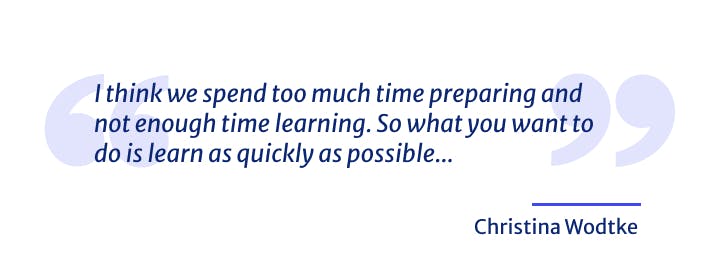
“How often do you recommend to revisit those OKRs?”
Well, I’m a big fan of quarterly cadences because as Spotify says, it’s just long enough to learn something and just short enough that you haven’t forgotten what happened. So just, you know, starting it out for one quarter and just doing one OKR, as I said, and everything else comes to keep going. You’ve got a roadmap, you’ve got a pipeline, whatever. And see what you think. That’s it.
“I want to explore another hot topic, which is feedback delivery. For remote teams who have to schedule interactions and lead without authority. How do you recommend they implement some sort of social norms to better collaborate and help each other out?”
When I finished Radical Focus, people kept saying, how do we do people management? How do we handle this problem? And I’m like, that’s not OKR. Is that something else? And eventually, I wrote The Team That Managed Itself to talk about those things. From the original book, Wisdom of Teams, I talk about goals, roles, and norms. Those are the three things that make companies incredibly successful.
Those are the three things that make incredibly successful. So goals, we got OKR it’s done, but why norms? What do we even mean? A norm is basically, how we agree to interact with each other. But the problem is they’re often unspoken. And what you want to do is make them clearly spoken so that everybody knows that we have a set of norms.
And so you said you’re from Spain. I spent part of my life down in Belize. and I will tell you that we’re going to meet at 10 o’clock. I mean, something completely different at Stanford. It means 10, 10, or 10 15 then, believes which means somewhere in the middle of the morning. And so that’s a norm that actually weirdly enough, can make people really angry and really resentful, right?
If you expect somebody to be there between 10 and 10 15, and they’re showing up at 11, you’re going to be angry. By consciously saying, what do we mean by it on time? And then there’s tons of other things like, how do you want feedback? How would you like me to tell you when I think there’s something you’re doing that could be better? How do we reach consensus? Do we disagree and then commit? Do we have to reach a true consensus? You know, there’s so many questions and everybody has this mental model in their head.
When you first gather as a team, you’re going to set up norms, and then for the rest of the team’s life, you’re going to check in with them. You’re going to do tiny retrospectives. 10-minute retrospectives are what I recommend just saying, okay, here’s what we said we were going to do. Is there any experiment we want to run, but we want to try doing our meetings as a standup? Do we want to start meeting 10 minutes early, whatever wacky thing you want? At the end of the quarter, you have a richer, retrospective where you talk about, okay, what have we learned about working together? What do we want to fix? That’s a really, really critical tool just to make sure that everybody’s working from the same page and avoiding all those stupid, useless, unnecessary conflicts we don’t need.
I want to speak to your first half, which is, giving feedback to someone who’s maybe violating the norms or perhaps doing something that you’re unable to navigate. For example, I kind of lose my mind when people interrupt me, especially if they’re guys. But they don’t know, like what if they’re Italian and that’s just what we do. We talk on top of each other and we get excited and we’re all friends. Right. You know, so that’s one of those places where I need to say, you know, I like to gather my thoughts and when you interrupt me, unfortunately interrupts my thoughts. And I’d really like to ask you, is it possible that you could restrain yourself on that? Because unfortunately that makes me sad and uncomfortable. And, I feel like I can’t say anything around you because you’ll jump on me. And trying to figure out how can I phrase this in a way that it can be heard and we’re not making this person a bad guy so that they freak out, but just saying, here’s how I’m affected by your words. And I’m wondering if we could do things a little bit differently.
I’ve discovered since I started making norms a lot more clear that even my friends are annoyed by me, but with some of the things I do when I’m annoyed with them sometimes. Instead of like, you know, when you’re somebody does something and you’re like, oh gosh, I don’t know how to tell them. And I’m really worried, but I’m really mad at them. And I don’t think I can look them in the eye until we talk about this. And you’re getting all crazy in your head if you can practice instead when somebody does something and just says, I’m not really good with that. You know, get out really quick before you can get all weird about it. And then if they are friends, you can talk about it. And if they are more of a colleague and you’re not ready, you haven’t got your words for them. You can say, would it be okay if I gathered my thoughts and come back later? And most people will say yes. So getting used to quickly diving in and not sitting on it and not soaking in it, it’s a really good habit to try to develop.
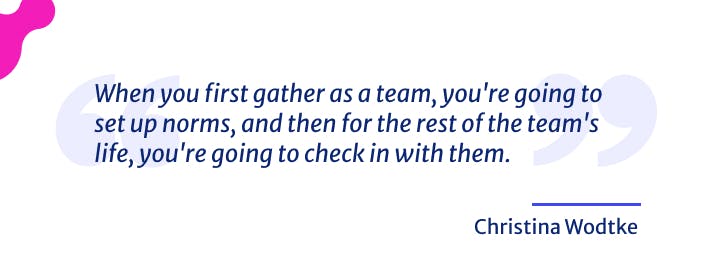
“And what would you say to people who are now thinking, yes, this is great. But you know what, I am new to the company and I’m afraid that if I try to have an open conversation with my manager, he/she might take it the wrong way.”
I mean, there’s a lot of things to say about that. One is, your goal in your first 90 days is to build social capital, which means you’ve got to get some wins. You’ve got to teach people to trust you. You have to let people know that you’re not going to be dangerous to them. It means having lots and lots of cups of coffee or tea with everybody you possibly can. And just sitting there and listening to them.
Just listening to people is a great way to create social capital because everybody is dying to find somebody who listens to them and really hears them. So those are things I do early. But the other thing I want to point out is I think a lot of people want to get authority from a title. And I have not seen that work. You get authority through your own confidence, your own kindness, your own strength. And that’s something that no titles are going to give you. So the more you spend time getting to know who you are and learning to love that. And again, we’re getting all touchy-feely here, welcome to Silicon Valley.
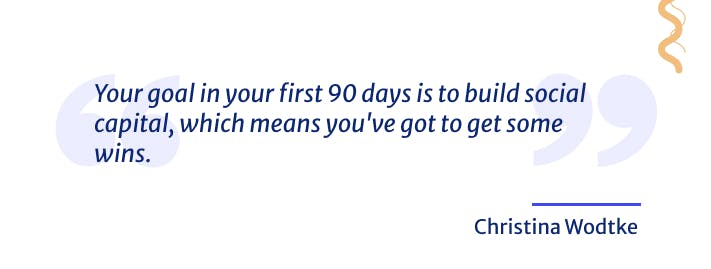
But you know, Stanford, Graduate School of Business, one of the best business schools in the country, they have a class called Interpersonal Dynamics and all the students call it touchy, feely. And it’s not required, it’s an elective and everybody takes it because the reality is, if you’re working with people, you have to kind of get good with you and you have to get good with other people. You have to learn how to bridge that gap between their goodness and your goodness.
“That was the class I was actually referring to Carole Robin. It’s been tremendous for us to get us through this process. There is another book called connect which I think is really cool for people to have access to some of these interpersonal dynamics that I think are really powerful regardless of your title and your location.”
Absolutely. I would also recommend Ed Battista’s blog. He taught touchy-feely for years, and he’s just an amazing writer. So if anybody’s like 20 bucks, I don’t have that in my pocket, you know, try the internet.
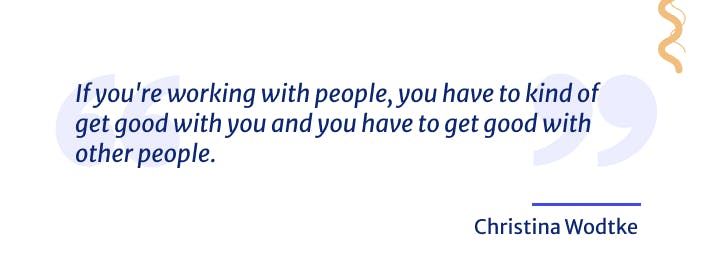
“Is there anything else you would like to add? ”
I do have something I want to add. It’s going to be very touchy-feely, which is, one of the things I’ve noticed with both my clients and my students is that the pandemic’s really worn us out and people are fuzzy-headed and people are making mistakes and people are getting crabby. And I think this is an incredibly important time to be kind to people and be as kind as you can, including yourself. Don’t overwork yourself. Don’t get mad at yourself. You make a mistake. There’s an old saying, which is, be kind to everybody you meet because they too are fighting a great battle. We’re almost over the finish line. Let’s just be as kind as we can a little bit longer. And who knows? You might like it. You might keep doing it for the rest of your life.
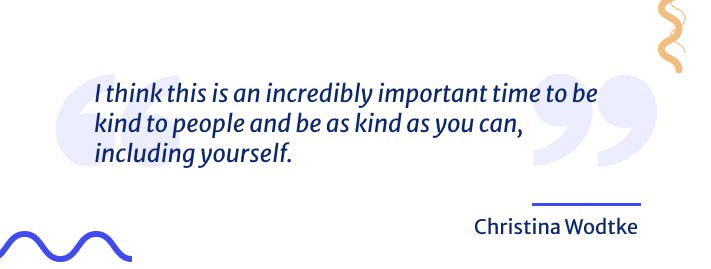
Come back again next week for more Product Author goodness!
Listen to our episodes on your favorite platform
Stay tuned for new episodes
By sharing your email, you agree to our Privacy Policy and Terms of Service

